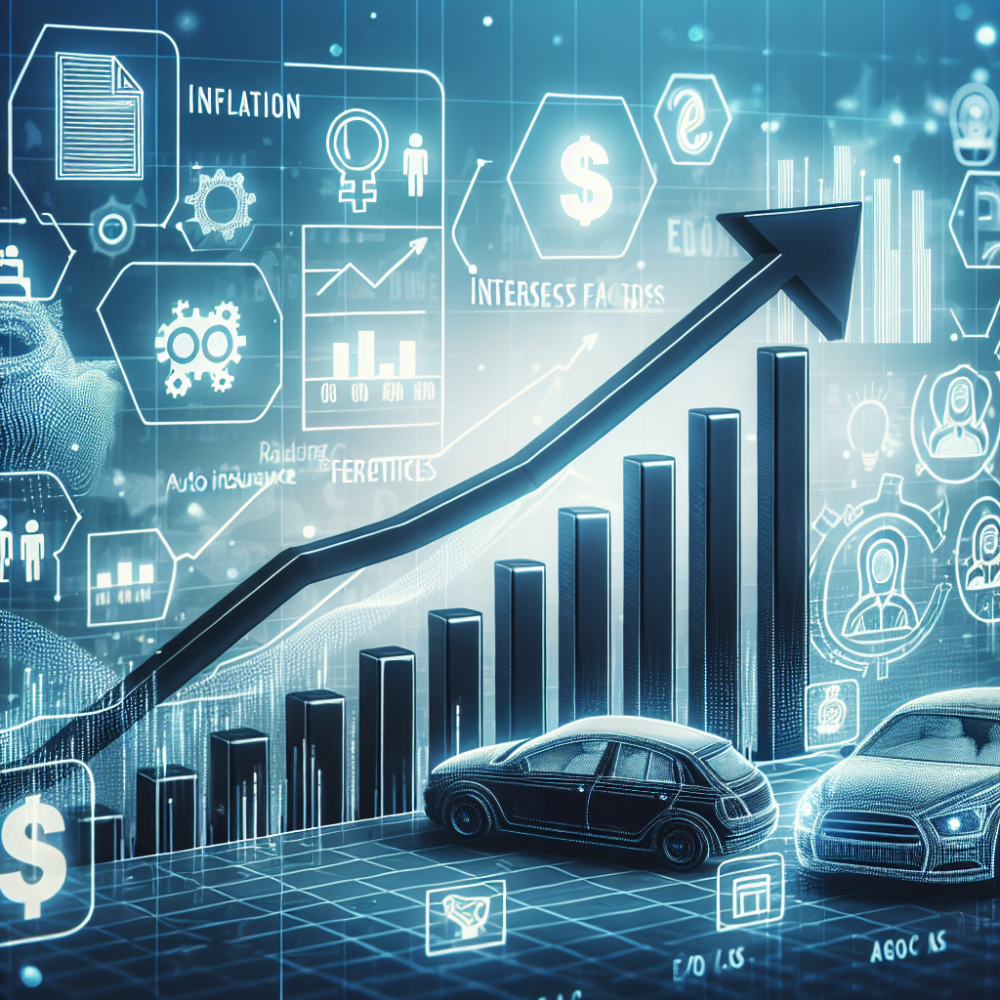Predicting Changes in Auto Insurance Rates: The Economic Perspective

Posted on: Saturday, March 2nd, 2024
The landscape of car insurance premiums is poised for noticeable transformation influenced by various economic factors. As the global economy faces a future of both innovation and uncertainty, these elements will play pivotal roles in shaping the cost of insuring vehicles. The introduction of advanced automotive technology, alongside shifts in global economic conditions, promises to bring both opportunities and challenges to insurers and policyholders alike. This guide delves into the top economic factors that are expected to drive changes in car insurance premiums in the forthcoming years.
1. Inflationary Trends
Inflation affects virtually all sectors of the economy, and the car insurance industry is no exception. As the cost of vehicle repairs, medical expenses, and replacement parts rises, insurers are compelled to adjust premiums upwards to cover these increased costs. The rate of inflation is thus a critical determinant of insurance premium adjustments, making it a primary economic factor to watch.
2. Interest Rates
Interest rates, set by central banks, influence the investment income insurance companies can generate from their reserves. In periods of low interest rates, insurers may face challenges in generating adequate returns, potentially leading to higher premiums for policyholders. Conversely, higher interest rates can boost insurers' investment income, possibly mitigating the need for premium increases.
3. Technological Advancements
Technological innovations in the automotive industry, such as autonomous vehicles and telematics, are altering risk profiles and, consequently, the algorithms insurers use to calculate premiums. While these technologies offer the promise of safer roads and fewer accidents, they also necessitate significant investment from insurers in risk assessment tools, which can impact premium rates.
4. Regulatory Changes
Regulatory environments across the globe are constantly evolving, and these changes can have substantial effects on car insurance premiums. New regulations can impose additional costs on insurers, such as increased capital requirements or obligations to cover new risks, which may be passed on to consumers through higher premiums.
5. Geopolitical Instabilities
Global political tensions and instabilities can lead to economic sanctions, trade disputes, and fluctuations in global markets, impacting the insurance industry indirectly. These factors can affect insurers' investment portfolios and their ability to source replacement parts or services internationally, potentially leading to increased operational costs and, consequently, premiums.
6. Market Competition
The level of competition among insurers within a market can significantly influence premium prices. Intense competition tends to drive premiums down as insurance companies vie for market share. However, consolidation in the industry could reduce competition, potentially leading to higher premiums.
7. Demographic Shifts
Demographic changes, such as an aging population or shifts in driving habits (e.g., reduced vehicle ownership among younger generations), affect the risk pool that insurers cover. These shifts can lead to adjustments in premium pricing structures to accurately reflect the changing risk landscape.
8. Natural Disasters and Climate Change
An increase in the frequency and severity of natural disasters, attributed to climate change, poses significant challenges to the insurance industry. These events can lead to higher claims, forcing insurers to raise premiums to compensate for the increased risk and repair costs associated with such disasters.
9. Economy-wide Recessionary Pressures
Economic downturns can lead to increased insurance fraud and a higher likelihood of policy lapses as consumers look to cut costs. These factors put financial pressure on insurers, which may necessitate premium increases to maintain solvency and ensure claims are covered.
10. Global Supply Chain Issues
Disruptions in the global supply chain, such as those experienced during the COVID-19 pandemic, can significantly increase the costs associated with car repairs and replacement parts. Such increases directly impact the operational costs of insurers and are often reflected in higher car insurance premiums.
In conclusion, a myriad of economic factors are set to influence the future of car insurance premiums, each interplaying in complex ways to shape the landscape of auto insurance. By staying informed on these key issues, both insurers and policyholders can better navigate the evolving economic environment and its implications for car insurance costs. As these trends unfold, it will be essential for all stakeholders to adapt to the changing economic signals to ensure a stable and fair insurance market.